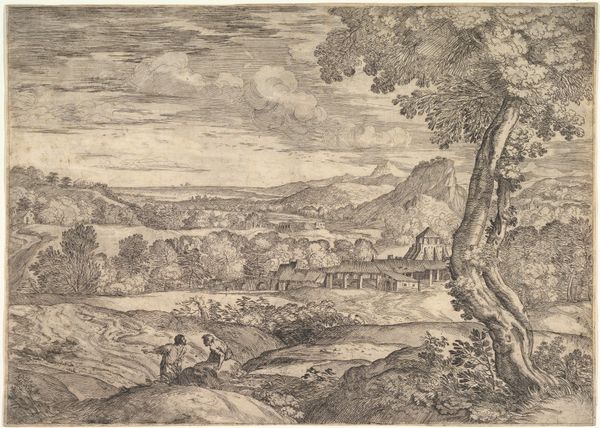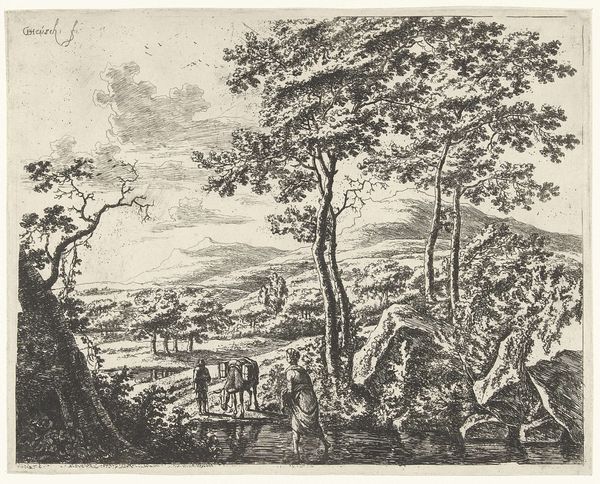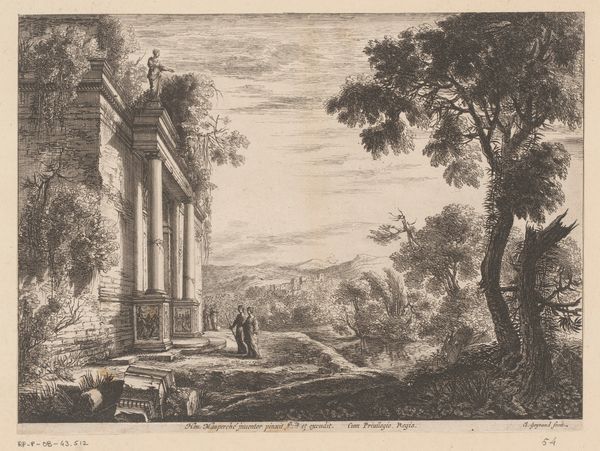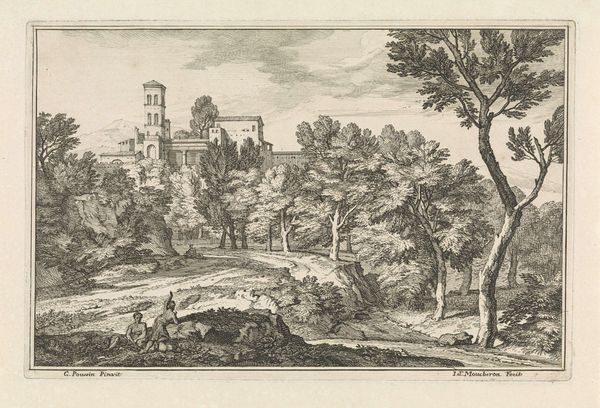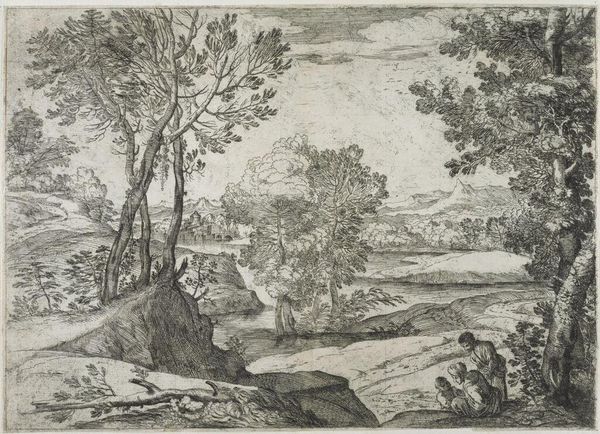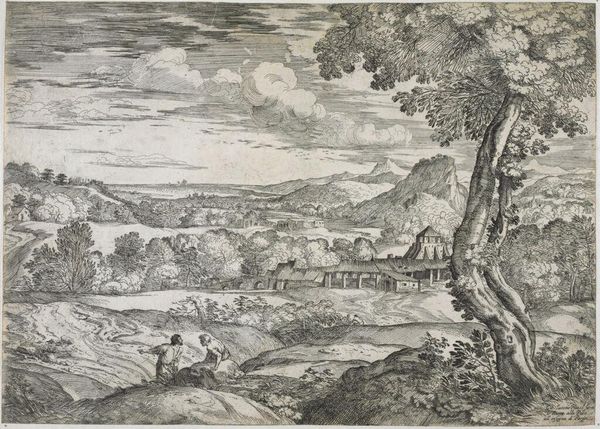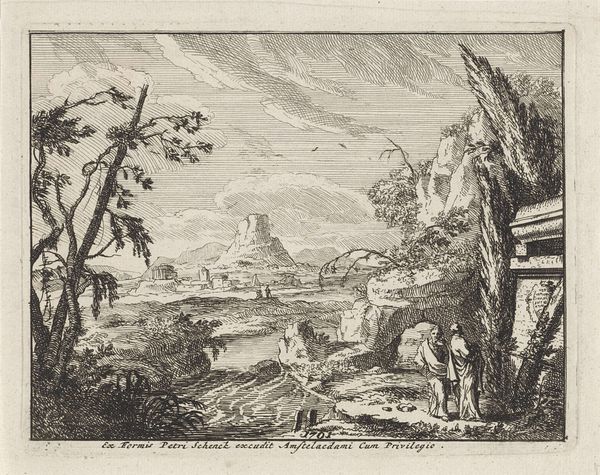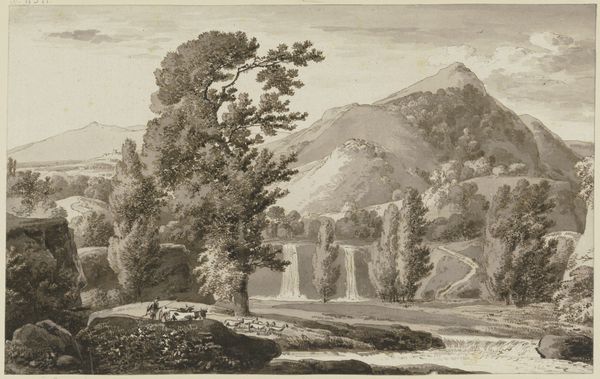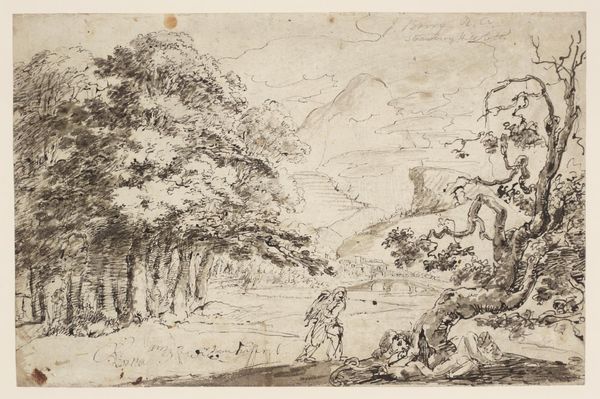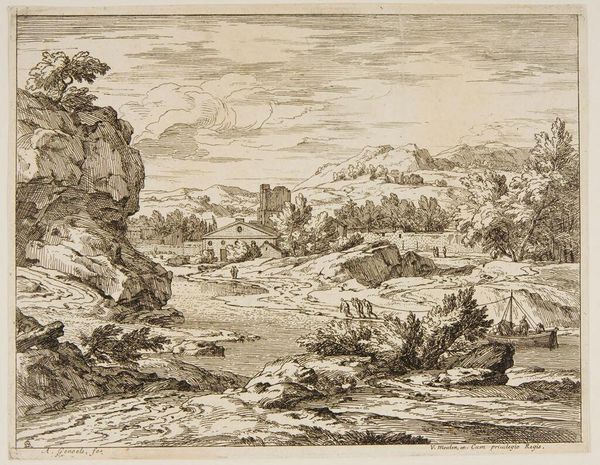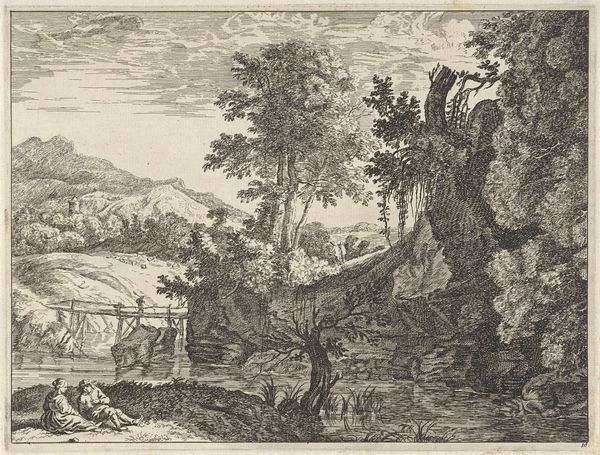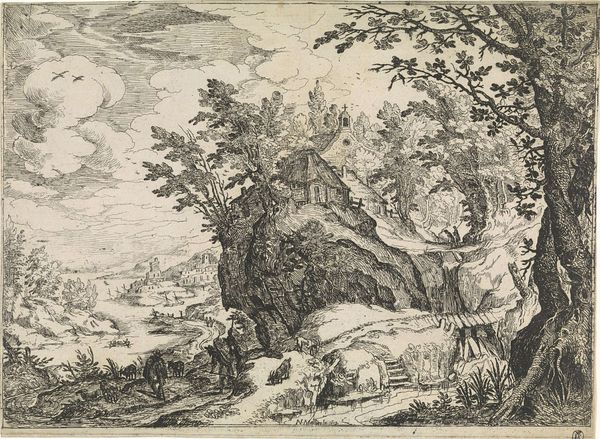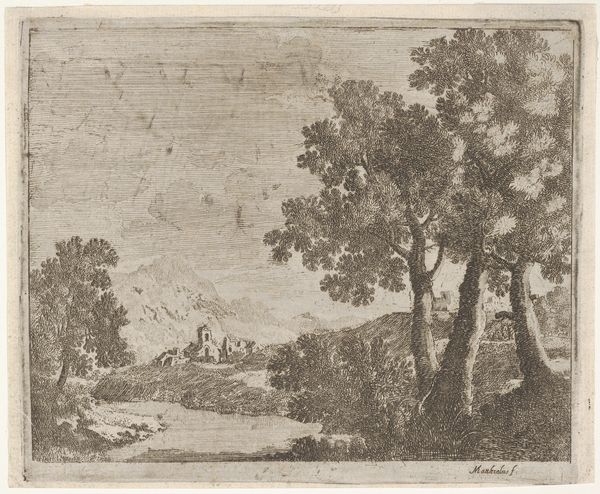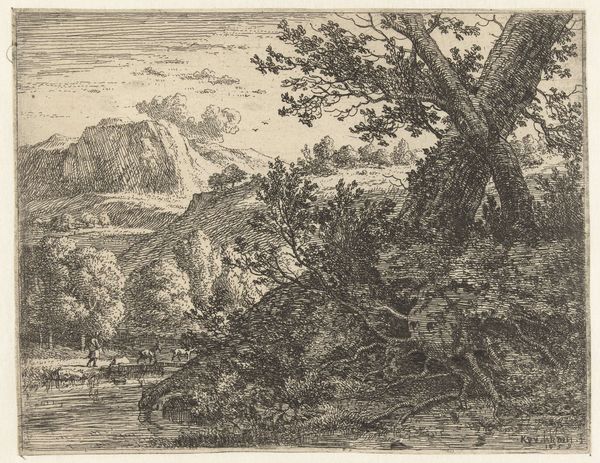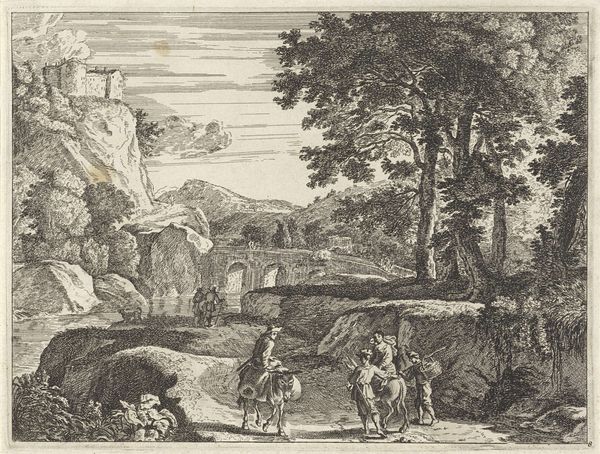
Copyright: Public domain
Berthe Morisot painted this scene, View of Tivoli (after Corot), using oil paints on canvas. Morisot's artistic practice involved the manipulation of a very specific set of materials. Oil paint offered a fluidity and blendability ideal for capturing atmospheric conditions, and its portability facilitated painting en plein air, a hallmark of the Impressionist movement. Morisot's technique, characterized by loose brushwork, and light, airy strokes is evident. These techniques would have been considered radical in academic painting circles, which prioritized tightly controlled detail. The painting process itself carries cultural significance. The Impressionists sought to represent modern life, but also challenged the traditional art establishment by embracing spontaneity and personal expression. There is a level of immediacy in this work, suggesting that Morisot valued direct engagement with her subject, and a break from academic convention. Ultimately, by considering materials, and making processes, we gain insight into Morisot's creative choices, and the cultural values that shaped her artistic vision, moving beyond conventional art historical understanding.
Comments
No comments
Be the first to comment and join the conversation on the ultimate creative platform.
